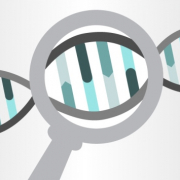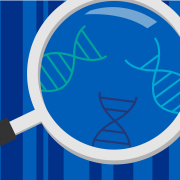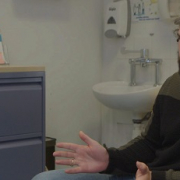Genomic approach predicts risk of oesophageal cancer
Can we use genomics to accurately predict the development of cancer in those with precursor conditions? We look at newly published results from a 15-year study to find out
A statistical model that can predict which patients are likely to develop oesophageal cancer has been developed following a recent study.
The research focused on patients with a condition called Barrett’s oesophagus and correctly identified individuals with a high risk of developing cancer years before a positive cancer diagnosis, using DNA from routine biopsies.
Understanding Barrett’s oesophagus
Barrett’s oesophagus is a condition that can be, but is not always, a precursor to oesophageal cancer – a so-called ‘cancer predisposition syndrome’. It is where acid and bile reflux from the stomach cause the cells that line the oesophagus to change shape and grow abnormally. These changes are called dysplasia, and the more abnormal the cells become, the higher the risk of cancer developing.
According to Cancer Research UK, between 3 and 13 people in every 100 with Barrett’s oesophagus will go on to develop oesophageal cancer. Because of this increased risk, and because oesophageal cancer can be difficult to treat if not identified early, these patients are closely monitored. The only way to do this is by collecting biopsies – usually every two years, which can be uncomfortable and stressful for patients.
Finding a genomic basis
Multiple recent studies (including the largest ever study of cancer genomes, published in February 2020) have shown that the accumulation of variations leading to cancer can occur over long periods of time before diagnosis. Researchers from the University of Cambridge and the European Molecular Biology Laboratory’s European Bioinformatics Institute wanted to see if these early genomic changes could be harnessed to predict future disease in a clinically useful way.
They used whole genome sequencing to examine 777 biopsy samples taken over a period of 15 years. The samples were provided by 88 patients with Barrett’s oesophagus at Addenbrooke’s Hospital in Cambridge, as well as control samples from those with healthy oesophageal cells.
The researchers then compared the genomic changes in samples from patients who ultimately developed cancer with those who did not.
Copy number variants
The results of the study, published in Nature Medicine, showed that the genomes of samples from patients who went on to develop cancer contained a much higher number of a particular type of variant, known as a copy number variant (CNV).
CNVs are a well-known type of genomic variant, commonly associated with tumours. They consist of regions of DNA that are repeated too many or too few times, and can be amplified with repeating cell divisions.
Not only were there a higher number of CNVs in samples from patients who would later develop cancer, but the number and complexity of such alterations increased over time for each individual.
Accurately predicting risk
The researchers used their findings to develop a statistical model that can predict the risk of developing cancer for each individual, just from a single biopsy. They tested the accuracy of the model on 213 samples from 76 patients.
The model correctly identified half of all the patients who went on to develop oesophageal cancer more than eight years before diagnosis. In samples taken two years prior to diagnosis, over 70% were correctly flagged as high risk.
The model was also effective at predicting the patients with the lowest risk, who did not go on to develop cancer. The authors suggest that these patients could undergo less intensive monitoring and fewer invasive tests, markedly improving their quality of life.
To find out more about the use of whole genome sequencing in cancer, sign up for our free, online course and watch our video with Dr Alison Berner.
If you are an oncologist or studying oncology, you might like to check out the dedicated section on our website.
–








